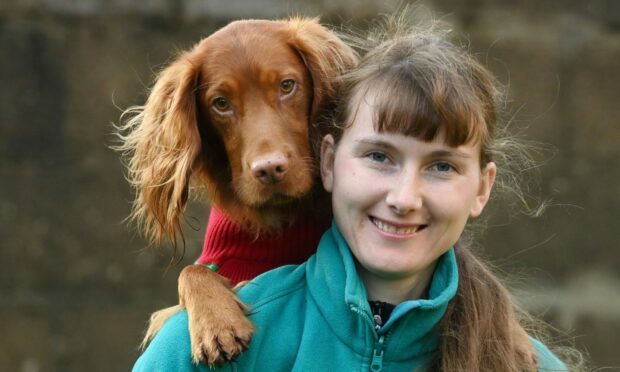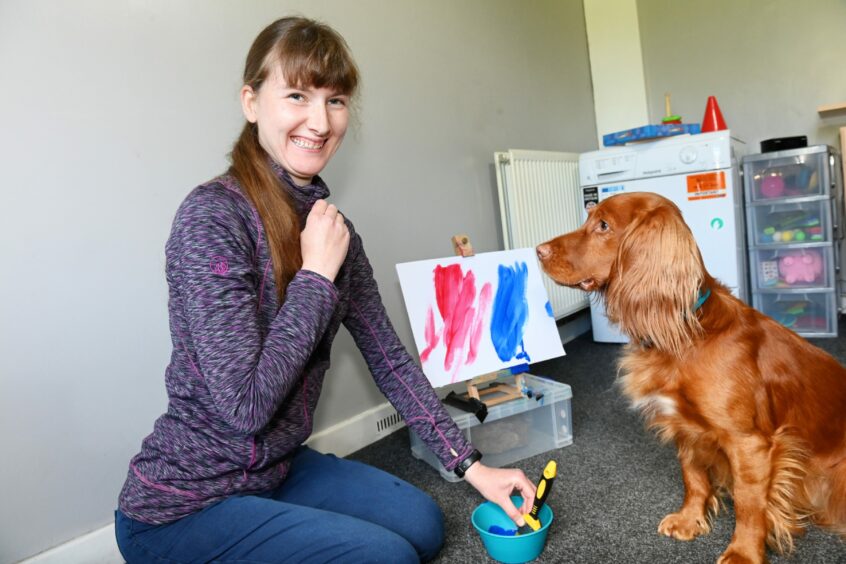An Aberdeen woman has offered up some tips to teach your dog new tricks this year.
Emily Anderson, 31, has been training dogs for more than 10 years and is now a full-time dog trainer.
Her three-year-old cocker spaniel Leo has become a social media star with millions of views on TikTok.
Leo has even previously won UK-wide dog talent and international dog trick competitions.
The clever pooch can also paint, and last year even created a canvas to be auctioned off for the Tripawds Foundation, which raises money to help support amputee pets and their owners.
And Miss Anderson believes learning tricks helped the pup regain his confidence after almost dying from a giardia parasite in 2020.
She is now keen to help others teach their dogs tricks.
Watch Leo perform some tricks as Miss Anderson explains his history below.
She says that all dogs can benefit from learning ticks.
“Trick training is suitable for all ages and breeds of dogs. It’s a great activity to do on cold, dark winter nights”, she said.
“Benefits of trick training include providing lots of mental stimulation – which for many dogs leaves them more tired than going for a long walk.
“It’s particularly beneficial for older dogs that may not be as physically able as they once were – there are lots of tricks that don’t require much movement.”
Always positive reinforcement, never negative
Her mantra is to always use positive reinforcement, never aversive based training methods.
Positive reinforcement involves marking the moment your does something correctly with a click or verbal “yes” followed by a treat.
Aversive training is when the dog is punished for doing something wrong.
Why does aversive based training not work?
Miss Anderson believes shock collars – which are not illegal in Scotland, but strongly advised against by the Scottish Government – and other forms of negative reinforcement can deliver a “quick fix” but do not allow the dog to really feel better.
She said: “Aversive methods work in the sense that if your dog wearing a prong collar was jerked every time they barked at a man, there’s a reasonable chance they would probably stop barking.”
“But they won’t feel any better.
“So it’s about changing your dog’s conditioned emotional response to seeing the stimulus, not just addressing unwanted behavior.”
Research from the Kennel Club shows 25% of dogs trained with electric shock collars showed signs of stress in comparison to less than 5% of dogs trained without the device.
Miss Anderson added: “Something I am quite passionate about is making your dog feel better, not just staying silent.
“And choke chains, prong collars, and shock collars are horrible nasty things.”
The path to trick success
Miss Anderson’s training mantra has continued to deliver success with Leo.
Their TikTok page has over 933,000 likes, with more than 36,000 followers.
The pair also have a booming Instagram page, with over 27,00 followers.
In May, a canvas painted by Leo went up for international auction to help raise money for amputee pets and their owners.
Miss Anderson’s other tips include breaking tricks into small parts and taking them one step at a time while remaining patient.
“If you break a really difficult trick down into a 100 pieces, it actually becomes really easy”, she said.
However, the most important aspect of Leo’s training remains when he is given treats for doing something correctly.
“I had to start breaking his treats into smaller parts because he would have been overeating otherwise”, Miss Anderson said.
“Now his mouth gets drooling as soon as we get started on tricks.”
To learn more tips about dog training, follow Miss Anderson’s training school on Facebook.




Conversation